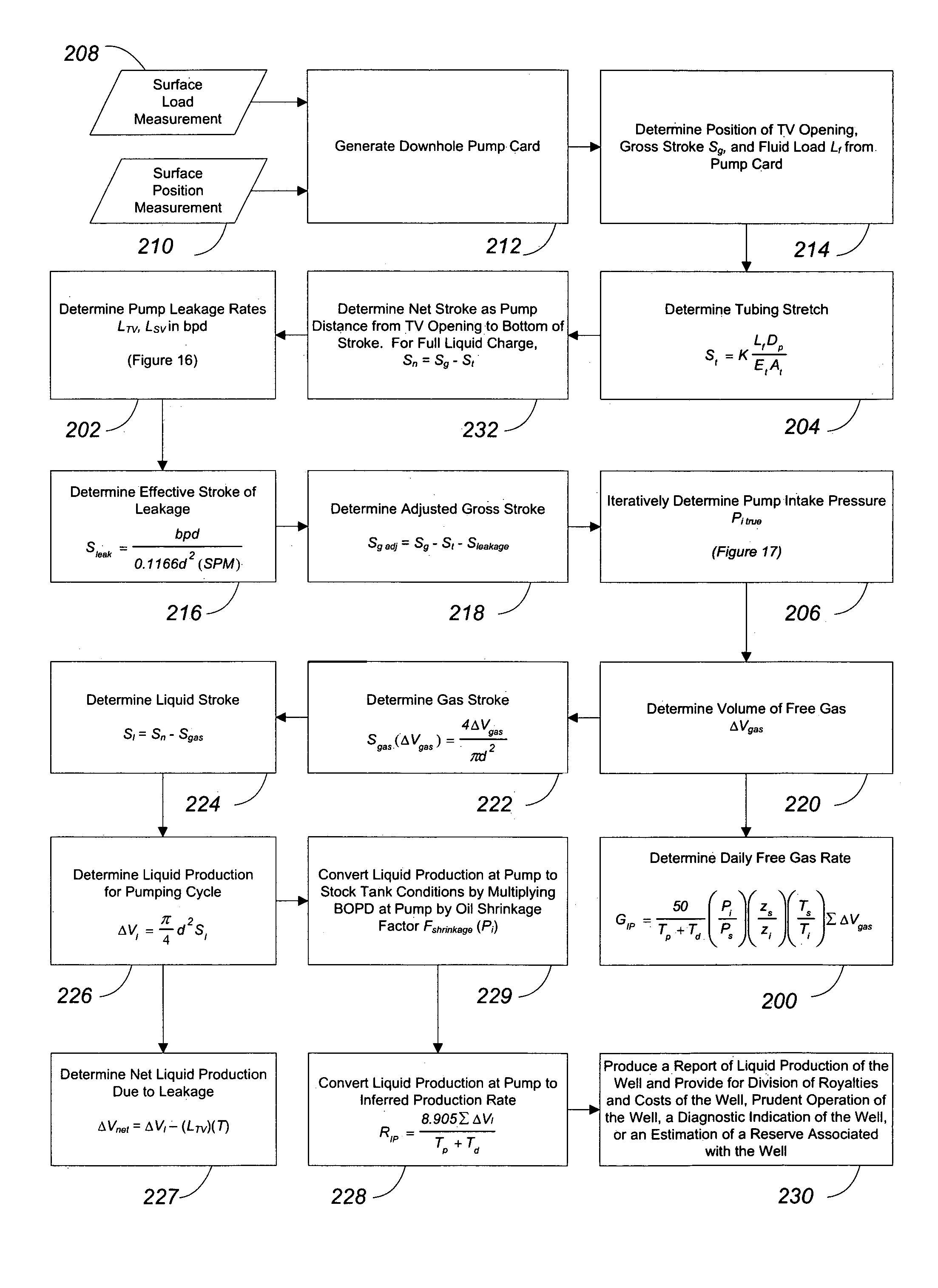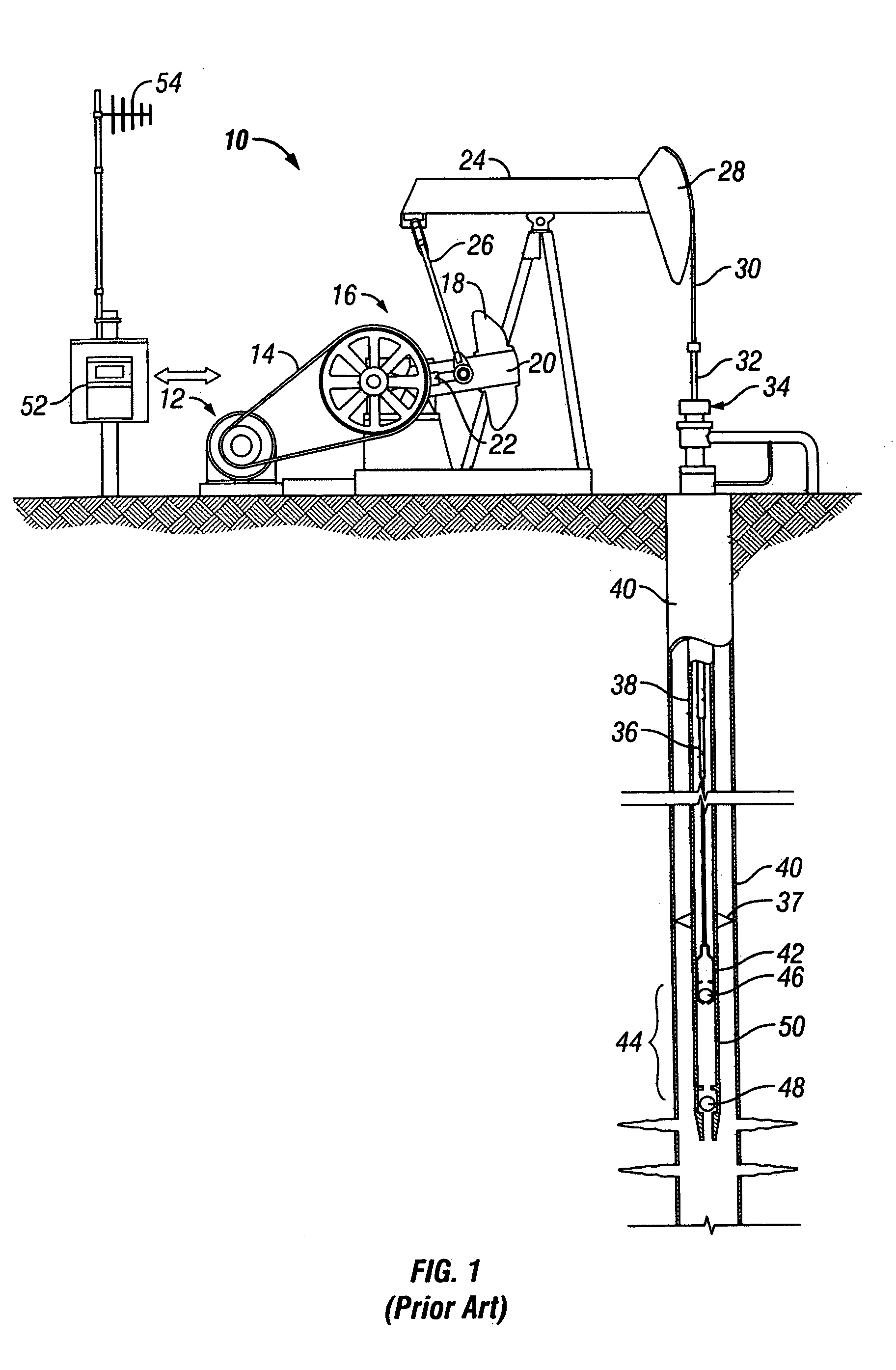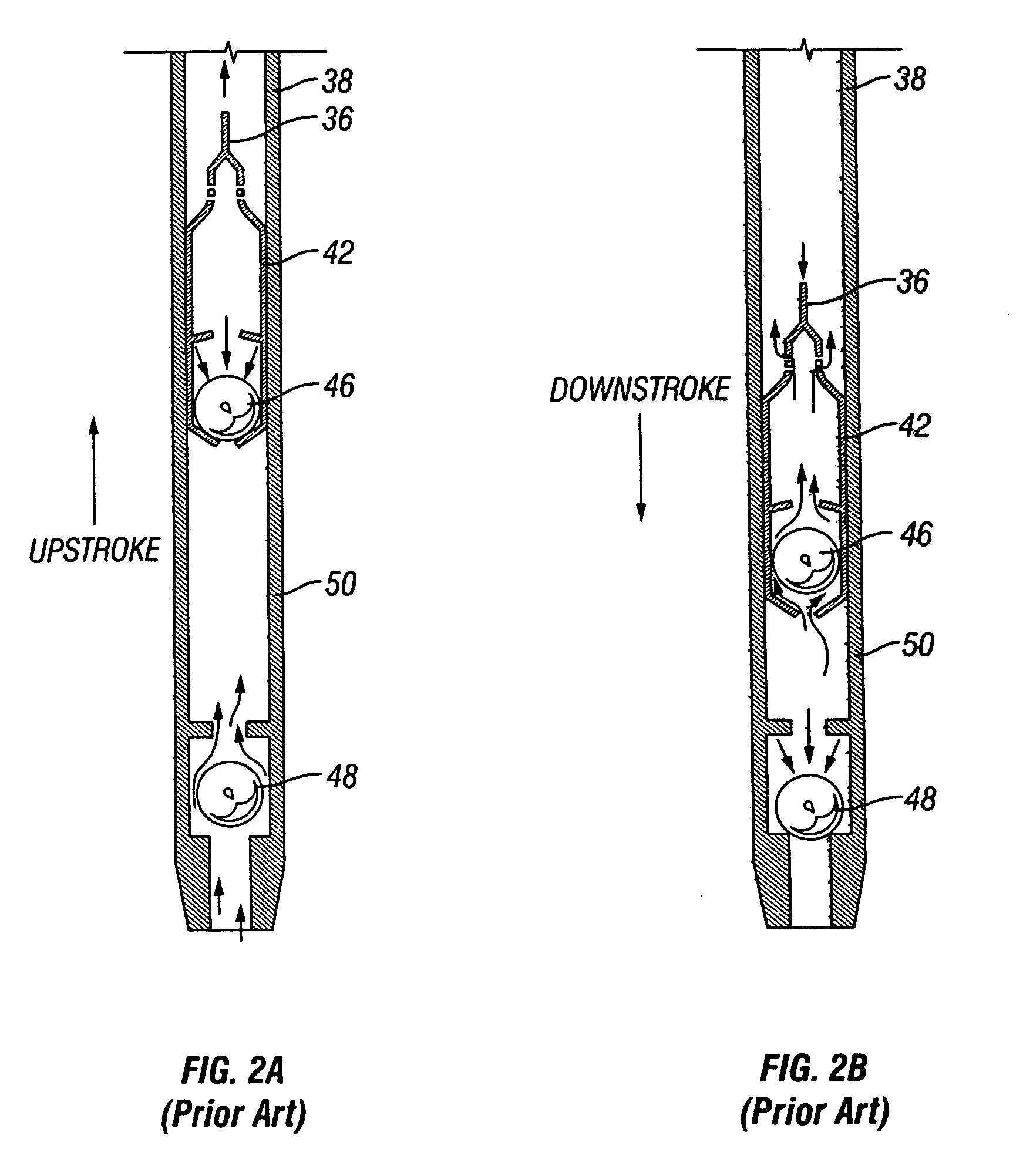Inferred production rates of a rod pumped well from surface and pump card information
a production rate and information technology, applied in the field of oilfield equipment for monitoring and controlling wells, can solve the problems of tubing leakage, low production rate, wear of down hole pumps, etc., and achieve the effect of high accuracy and high production ra
- Summary
- Abstract
- Description
- Claims
- Application Information
AI Technical Summary
Benefits of technology
Problems solved by technology
Method used
Image
Examples
example 1
[0155]This illustration is taken from an actual well in West Texas
[0156]A new production test of 400 BFPD (35 BOPD plus 365 BWPD) was obtained on a well having a Well Manager System with an Inferred Production IP System. In a manual mode, IP indicated a production rate of 524 BFPD based on a previously determined k factor of 0.9. The difference of 124 BPD had to be explained. WM indicated that the well pumps continually, i.e. does not pump off. The dynamometer data used by WM for control was exported to a program named DIAG for extracting information from the pump card. The pump card 570 re-created by DIAG is shown in FIG. 9A which also shows the surface card 572. FIG. 9B shows the velocity plot 574 corresponding to the pump card 570. The pump card method (described above) was used to compute pump leakage. Evidence of leakage is present on the pump card 570, i.e. delayed load pickup and premature load release. Eq. 7 indicates that TV / plunger leakage is 64 BPD as follows
LTV=6.99d2CpV...
example 2
[0166]The previous example shows, among other things, the uncertainties caused by an inaccurate well test and a severely worn pump. This example shows how the prior IP system can be improved for a gassy well with a good oil cut and a high pump intake pressure.
[0167]FIG. 10A shows the pump dynamometer card 580 and surface card 582 of such a well that is producing full-time. FIG. 10B shows a velocity plot 584 corresponding to pump card 580. Table I presented below for this example 2 is a PIP program analysis showing additional information that is available to IP according to the invention when the PIP program runs automatically in WM. The following accounting shows how the prior art IP system (unadjusted with a k factor) deals with the well.[0168]Gross pump capacity: 457 BPD (from the pump card)[0169]Net liquid (oil plus water): 395 BPD (from the pump card and Assumption 3, Sn=110.7[0170]Free gas production: 62 BPD (by difference or eq. 4 extended to 24 hours).
Based on a reported well...
PUM
 Login to View More
Login to View More Abstract
Description
Claims
Application Information
 Login to View More
Login to View More - R&D
- Intellectual Property
- Life Sciences
- Materials
- Tech Scout
- Unparalleled Data Quality
- Higher Quality Content
- 60% Fewer Hallucinations
Browse by: Latest US Patents, China's latest patents, Technical Efficacy Thesaurus, Application Domain, Technology Topic, Popular Technical Reports.
© 2025 PatSnap. All rights reserved.Legal|Privacy policy|Modern Slavery Act Transparency Statement|Sitemap|About US| Contact US: help@patsnap.com



